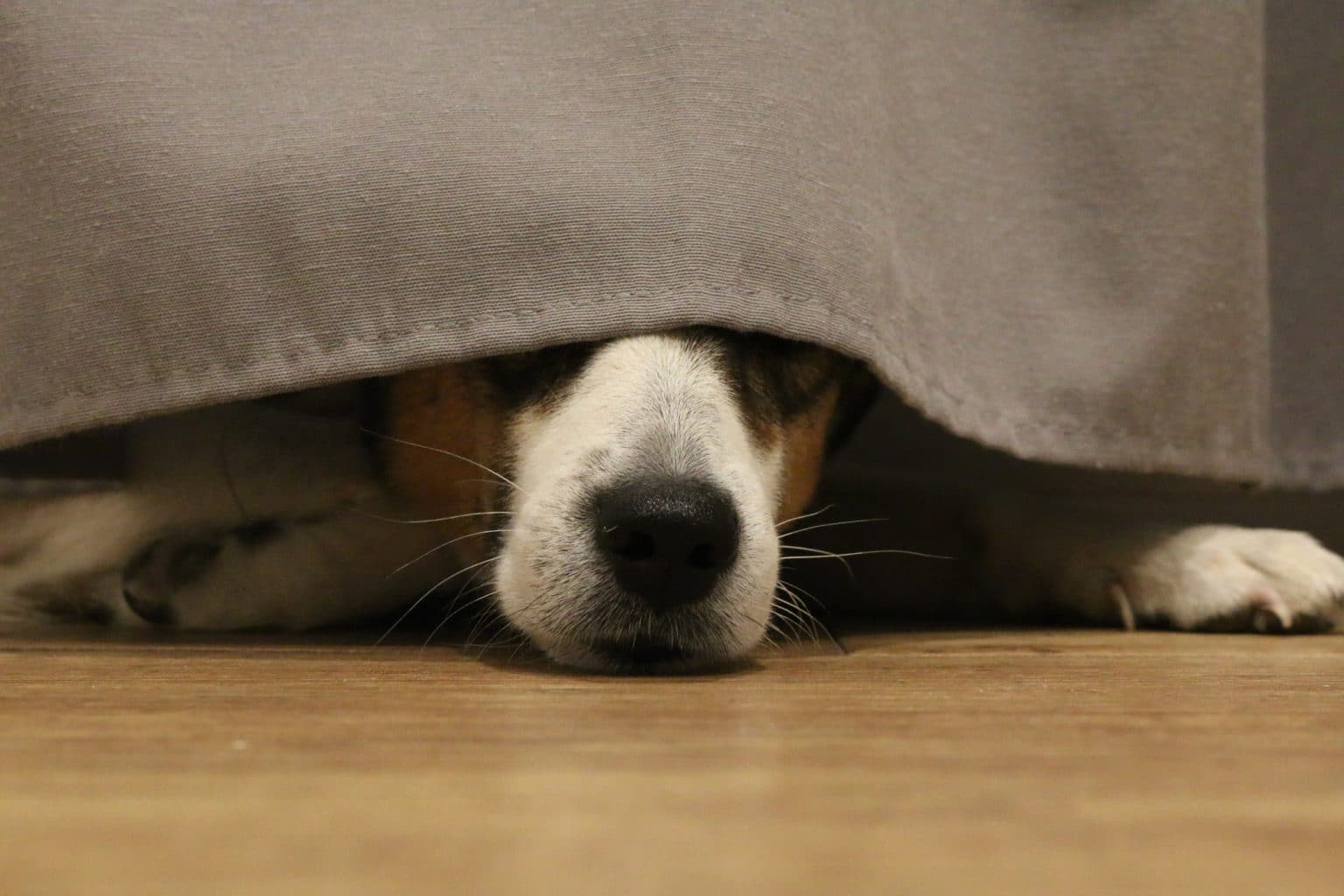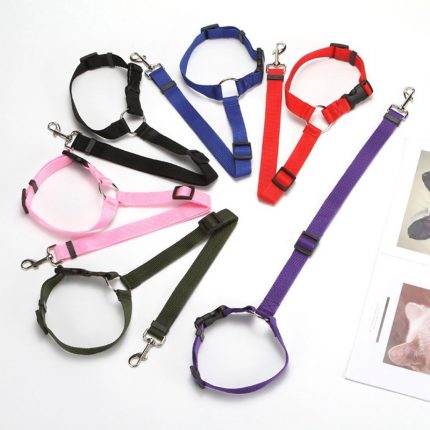Why Does My Dog Hide His Treats in My Bed?
Have you ever woken up to find a surprise stash of dog treats hidden in your bed? If so, you’re not alone. Many dog owners have experienced this puzzling behavior from their furry friends. While it may seem strange and even a bit amusing, there are actually some fascinating reasons behind why dogs engage in this peculiar habit.
Dogs are known for their instinctual behaviors, and hiding food is one of them. In the wild, canines are natural scavengers, and they often bury or hide their food to protect it from other animals or to save it for later. This behavior stems from their ancestral roots when survival depended on finding and storing food efficiently.
But why would your dog choose your bed as the hiding spot for his precious treats? One possible explanation is that your bed provides a safe and comfortable environment for your furry companion. Dogs have a strong sense of smell and are attracted to the familiar scent of their owners. By hiding treats in your bed, your dog may be seeking a sense of security and closeness to you, as if leaving a special surprise in a place that holds your scent.

Another reason could be that your dog sees your bed as a valuable resource. Dogs are known to guard their possessions, and by hiding treats in your bed, they may be marking it as their territory. This behavior could be a way for your dog to assert dominance and claim ownership over the bed, reinforcing their position in the household hierarchy.
Additionally, hiding treats in your bed could be a form of play for your dog. Dogs often engage in playful behaviors that mimic hunting and foraging activities. By hiding treats and then searching for them later, your dog may be satisfying their natural instincts and enjoying a fun and mentally stimulating game.
While it may be amusing to find treats in your bed, there are some practical considerations to keep in mind. First, make sure the treats your dog is hiding are safe and appropriate for consumption. Some dogs may hide perishable items or objects that could pose a choking hazard. Regularly check your bed for hidden treats to ensure the safety of both your dog and yourself.
In conclusion, the habit of dogs hiding treats in their owner’s bed can be attributed to their instinctual behaviors, the desire for security and closeness, marking territory, and engaging in playful activities. Understanding these reasons can help us appreciate this quirky behavior and provide appropriate guidance for our canine companions. So, the next time you find a surprise stash of treats in your bed, remember that it’s just your dog being true to their nature.
The Behavior Behind Dogs Hiding Treats in Beds
1. Scent Association and Security
One possible reason why dogs hide their treats in their owner’s bed is the strong association they have with scent. Dogs have an incredible sense of smell, and they are naturally drawn to the familiar scent of their owners. Your bed, being a place where you spend a significant amount of time, holds your scent strongly. By hiding treats in your bed, your dog may be seeking a sense of security and comfort, as they feel close to you even in your absence. It’s their way of creating a link between their precious treats and the comforting scent of their beloved owner.
2. Resource Guarding and Territory Marking
Dogs are known to be territorial animals, and hiding treats in your bed could be a way for them to mark their territory and assert dominance. By placing their prized possessions in your bed, they are claiming it as their own and reinforcing their position in the household hierarchy. It’s important to remember that dogs have a strong instinct to guard their resources, and this behavior should be addressed with proper training and guidance to avoid any potential issues.
3. Mimicking Natural Hunting and Foraging Behavior
Dogs are descendants of wolves, and their natural instincts include hunting and foraging for food. Even though our domesticated dogs don’t need to hunt for their meals, these instincts are still deeply ingrained in their DNA. Hiding treats in your bed can be seen as a form of play for your dog, as it mimics the actions of hunting and foraging. It provides mental stimulation and engages their problem-solving skills, making it an enjoyable activity for them.
4. Storing Food for Future Consumption
In the wild, dogs would often bury or hide their food to save it for later. This behavior is a survival instinct that ensures they have a backup food supply when resources are scarce. By hiding treats in your bed, your dog may be exhibiting this natural behavior, even though they have a steady supply of food readily available. It’s their way of being prepared and ensuring they have a hidden stash of treats for later enjoyment.
Conclusions
In conclusion, understanding why does my dog hide his treats in my bed can provide insights into your pet’s natural instincts and behaviors. For more comprehensive discussions and expert advice on this behavior and other fascinating canine habits, consider exploring Geepets.com. This site offers a wealth of information on dog care, training tips, and answers to common pet owner queries.
Additionally, for further reading on dog behaviors and how to manage them, the American Kennel Club is an invaluable resource that provides detailed articles, training guides, and expert advice to help you better understand and care for your furry friend. Both of these resources can be excellent starting points for pet owners looking to enrich their knowledge and ensure the well-being of their pets.

Practical Recommendations for Dealing with Dogs Hiding Treats in Beds
1. Provide Appropriate Storage Options
To prevent your dog from hiding treats in your bed, it’s essential to provide them with suitable storage options. Invest in a designated treat jar or container where you can keep their treats. This will not only keep the treats fresh and easily accessible but also discourage your dog from seeking alternative hiding spots like your bed.
2. Establish Clear Boundaries
It’s important to establish clear boundaries with your dog regarding where they can and cannot hide treats, especially if you’re wondering, “Why does my dog hide his treats in my bed?” Train them to understand that your bed is off-limits for storing their treasures. Consistency is key when setting these boundaries, so reinforce the desired behavior by redirecting them to their designated treat storage area whenever they attempt to hide treats in your bed.
This approach not only addresses the question of “Why does my dog hide his treats in my bed?” but also helps to maintain a clean and respectful living space for both you and your pet. Every time you catch them in the act, remind yourself of the question, “Why does my dog hide his treats in my bed?” and use it as an opportunity to reinforce the training. By consistently adhering to this training method, your dog will soon understand the appropriate places for treat storage, reducing the frequency of you asking, “Why does my dog hide his treats in my bed?”
3. Engage in Interactive Play and Mental Stimulation
Dogs often hide treats as a way to engage in playful activities that mimic hunting and foraging, which might lead you to wonder, “Why Does My Dog Hide His Treats in My Bed?” To satisfy this natural instinct and perhaps address the question of “Why Does My Dog Hide His Treats in My Bed,” provide your dog with interactive toys and puzzles that require them to work for their treats. This approach not only keeps them mentally stimulated but also helps redirect their desire to hide treats in inappropriate places like your bed, thus tackling the concern of “Why Does My Dog Hide His Treats in My Bed.”
By understanding the underlying cause of “Why Does My Dog Hide His Treats in My Bed,” and offering them an appropriate outlet for their instincts, you’re more likely to keep both your dog engaged and your bed free of hidden surprises. Engaging your dog with these alternatives can significantly reduce the frequency of pondering over “Why Does My Dog Hide His Treats in My Bed,” by fulfilling their natural behaviors in a more suitable manner.
4. Regularly Inspect and Clean Your Bed
To ensure hygiene and prevent any unpleasant surprises, make it a habit to regularly inspect and clean your bed. Check for hidden treats or any other objects your dog may have stashed away. This practice not only addresses the question of “Why Does My Dog Hide His Treats in My Bed” but also helps maintain a clean and comfortable sleeping environment for yourself while ensuring the safety of your dog.
If you’ve ever wondered, “Why Does My Dog Hide His Treats in My Bed,” it’s a behavior that can be both amusing and baffling. By doing so, you’re directly confronting the issue head-on, shedding light on the curious habit of “Why Does My Dog Hide His Treats in My Bed.” This frequent inspection can prevent the accumulation of crumbs and other debris, which could attract pests, further emphasizing the importance of understanding and addressing the behavior of “Why Does My Dog Hide His Treats in My Bed.”
Through this regular check, you not only keep your bed clean but also delve deeper into the peculiar habits of your canine friend, solving the mystery of “Why Does My Dog Hide His Treats in My Bed” while ensuring a hygienic living space for both of you.
5. Seek Professional Guidance if Needed
If you’re pondering over “Why Does My Dog Hide His Treats in My Bed” and this behavior becomes excessive or problematic, it may be beneficial to seek professional guidance from a certified dog trainer or animal behaviorist. They can delve into the underlying reasons behind “Why Does My Dog Hide His Treats in My Bed” and provide you with personalized training techniques to address and modify it effectively.

Understanding “Why Does My Dog Hide His Treats in My Bed” is crucial in tailoring an approach that discourages this behavior, while still respecting your dog’s natural instincts. A professional can offer insights and strategies specifically designed to answer the question of “Why Does My Dog Hide His Treats in My Bed,” ensuring a balanced and harmonious living situation for both you and your pet.
6. Be Patient and Understanding
Remember that dogs engage in this behavior instinctively, and it may take time to modify or redirect their actions. Be patient, consistent, and understanding throughout the training process. Avoid punishment or scolding, as this may create anxiety or fear in your dog. Instead, focus on positive reinforcement and reward-based training methods to encourage desired behaviors.
By implementing these practical recommendations, you can effectively manage and address your dog’s habit of hiding treats in your bed. Remember to provide appropriate storage options, set clear boundaries, engage in interactive play, regularly inspect and clean your bed, seek professional guidance if needed, and above all, be patient and understanding. With time and consistency, you can ensure a harmonious living environment for both you and your furry companion.















